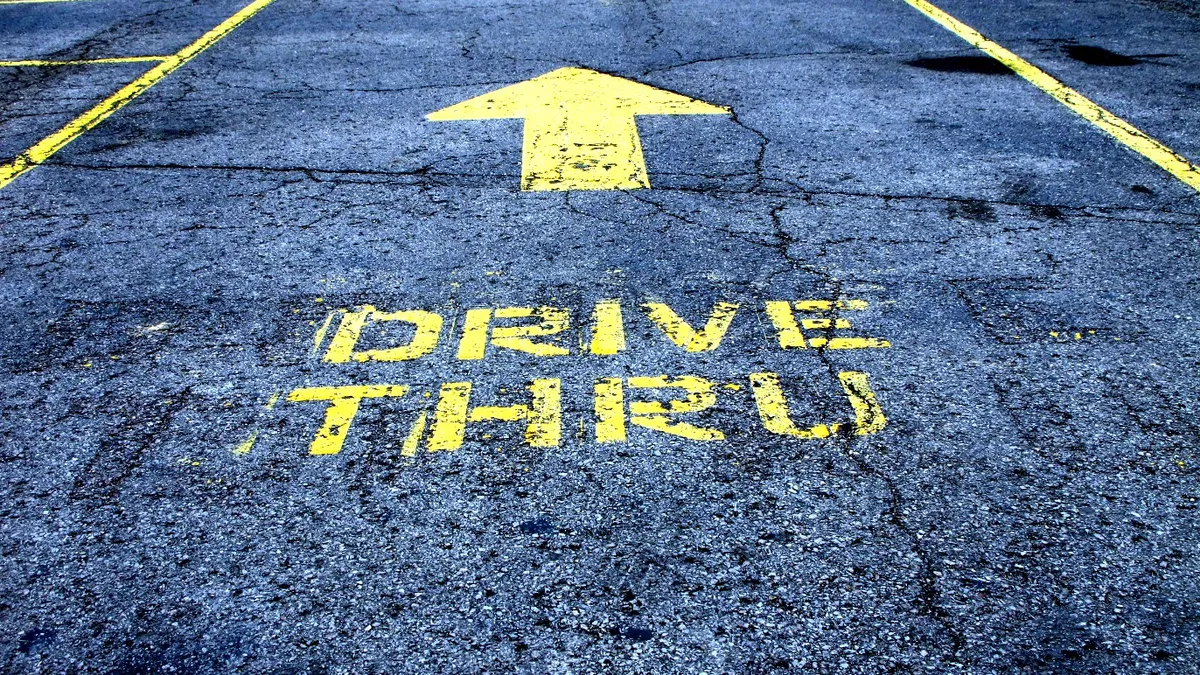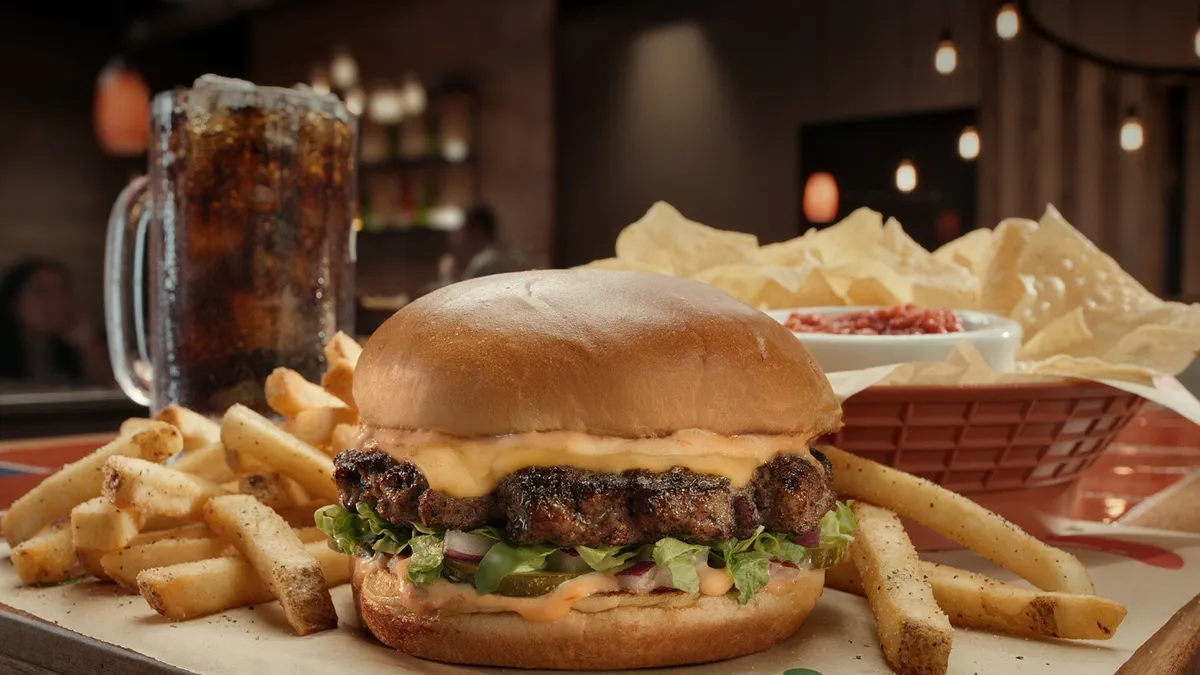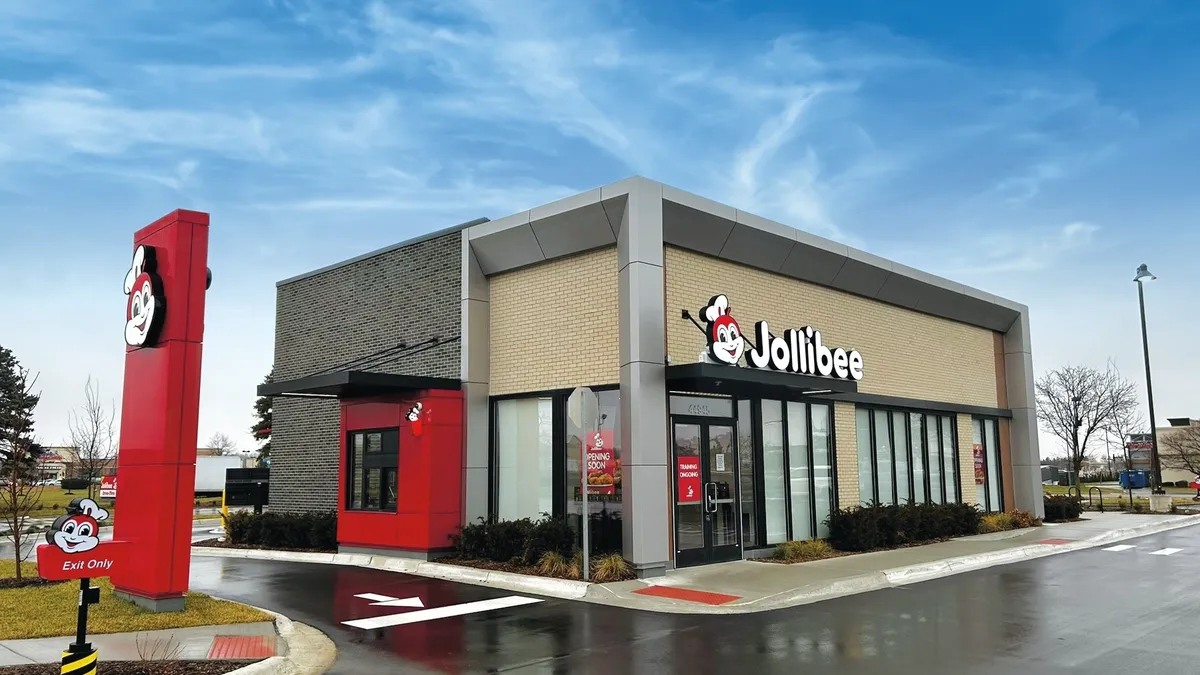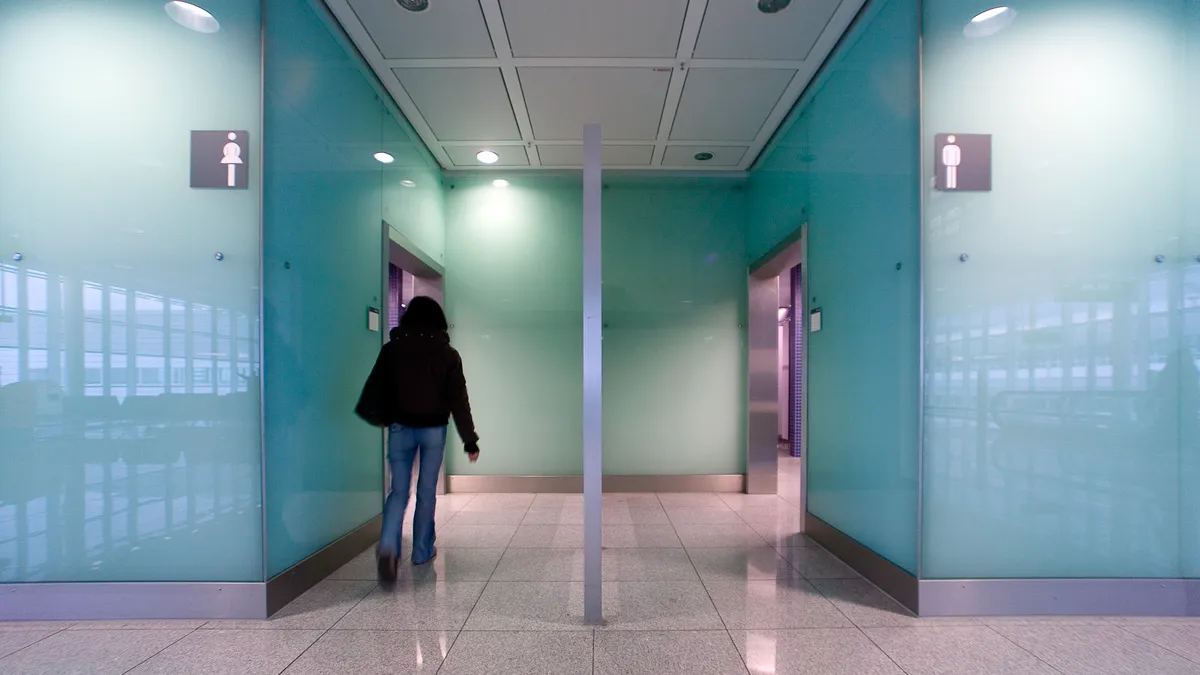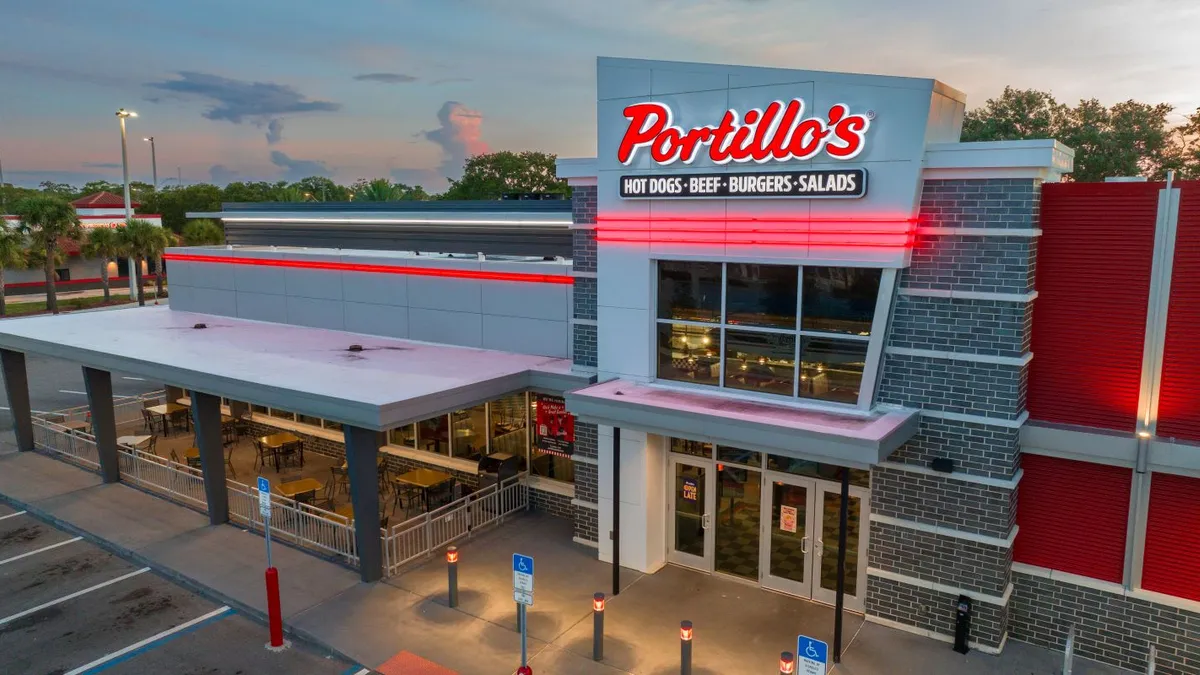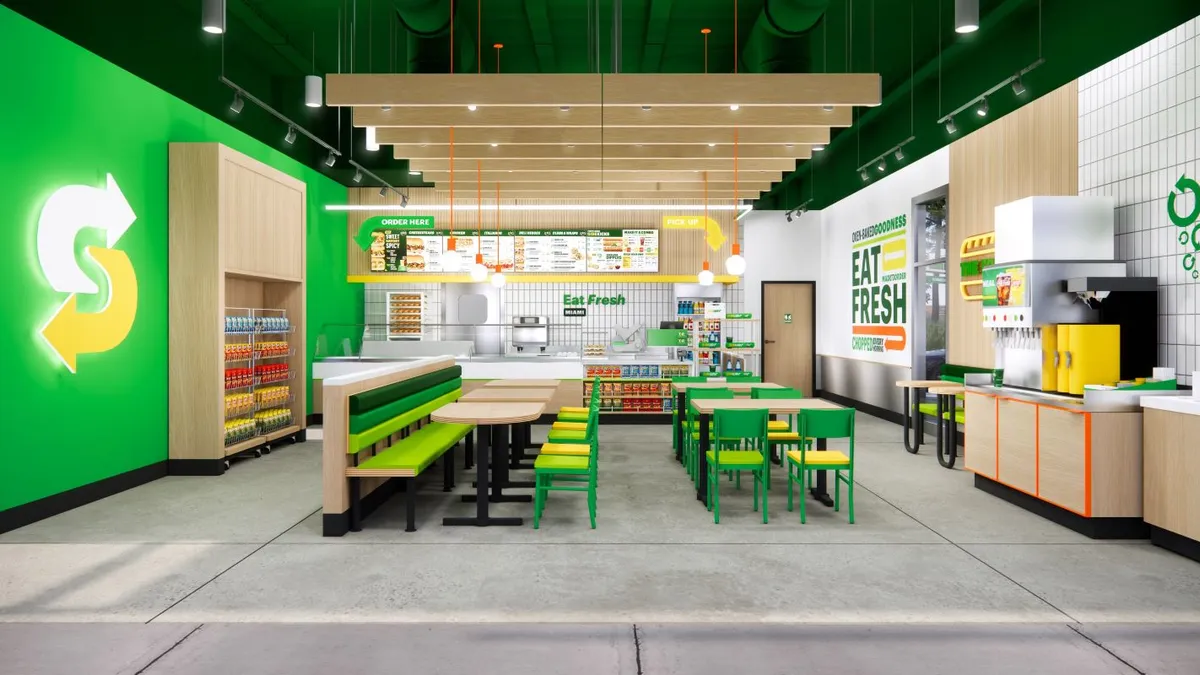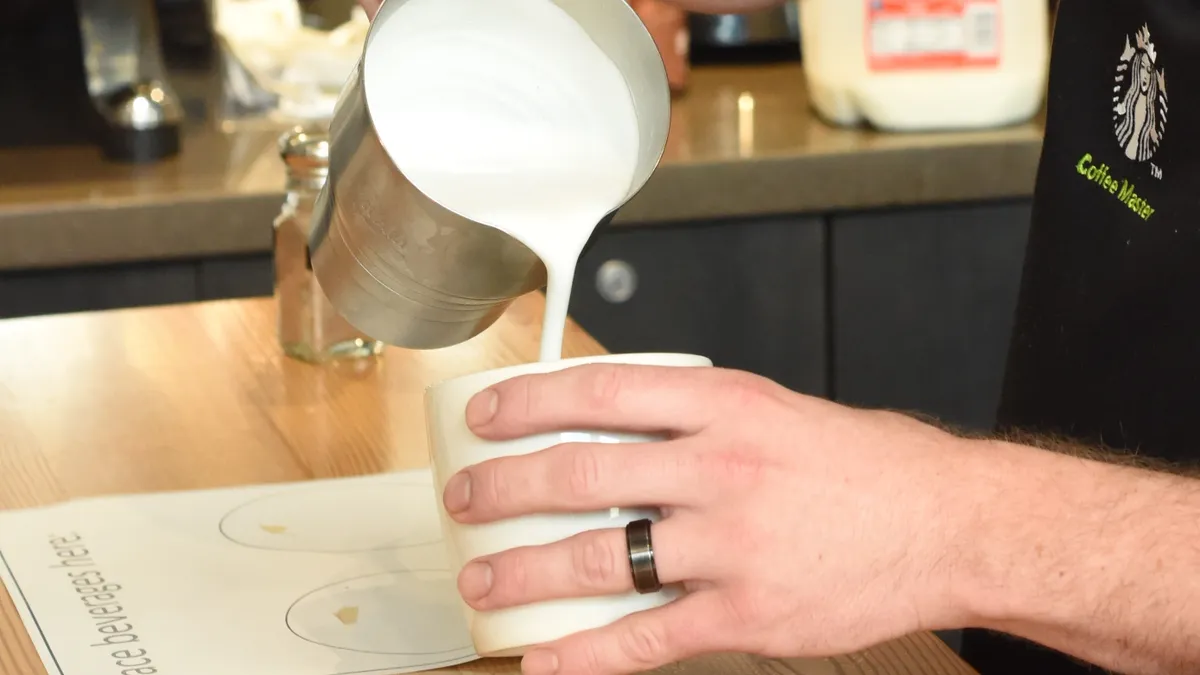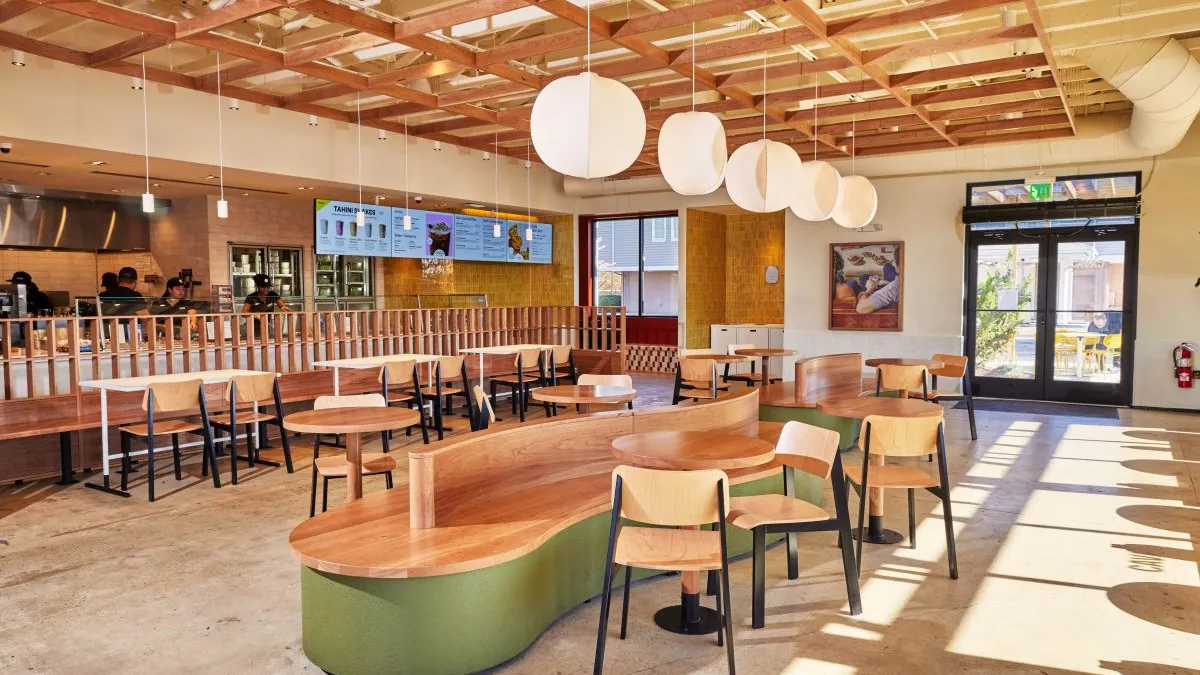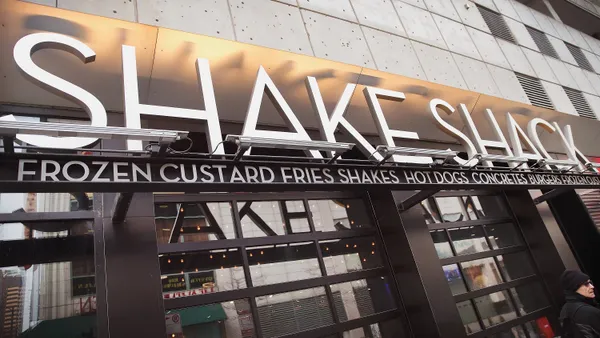Drive-thru has long been the bread and butter for major U.S. restaurant chains, but the pandemic has accelerated diner engagement with digital channels — offering opportunities for QSRs to integrate loyalty programs and new technology with the drive-thru lane, as well as an opening for fast casual brands to create mobile-only drive-thrus.
This boost in digital spending, along with widespread dining room restrictions, has also led to steep declines in on-premise traffic, forcing restaurants to rethink how to best use their real estate footprints to cater to the consumer of the future.
From store technology that sorts diners into different traffic lanes to conveyor belts that deliver food to customers, check out the design changes McDonald’s, Taco Bell, Burger King, Chipotle and Shake Shack are betting on to sharpen their competitive edge.
Taco Bell
Taco Bell is doubling down on digital sales growth potential with plans to launch a "Taco Bell Go Mobile" restaurant concept in 2021. The new format, which is only 1,325 square feet compared to a traditional 2,500-square-foot Taco Bell restaurant, will feature a traditional drive-thru lane and a priority pickup drive-thru lane to service customers who ordered through the chain’s mobile app. New smart kitchen technology integrated with the app will identify when a diner has arrived at the restaurant and will direct them to either the priority drive-thru lane or special parking areas for contactless curbside pickup serviced by "bellhops" depending on traffic.
Customers can also collect their orders from pickup shelves inside the restaurant. Diners have the option to choose how they would like to collect their orders at these locations, and if they choose Taco Bell’s suggested route they will earn extra loyalty points. This restaurant model further enhances the beta loyalty program Taco Bell rolled out in August, which offers customizable order options and could increase diner stickiness. Taco Bell will open two company-owned Go Mobile restaurants in Q1 of next year, Global Chief Operating Officer Mike Grams told CNBC.
Shake Shack
After building pop-up drive-thrus and curbside pickup in response to the pandemic, Shake Shack moved toward remodeling some stores to include drive-thru lanes and walk-up windows, dubbed Shack Tracks, after the end of Q1. Shake Shack will incorporate some version of its Shack Track prototype, which are expected to improve the digital order pickup experience, for restaurants in its pipeline — whether it be an enhanced interior pickup model, exterior walkup window or drive-up option, Randy Garutti, Shake Shack’s CEO, said during the company’s October earnings call. The company expects to complete seven to nine Shack Track retrofits at existing locations by the end of the year, he said.
The company is also planning to launch its first drive-thru location by the end of next year, Garutti said, adding that the company expects to build five to eight drive-thrus over the next two years.
"We view this model … as an important step towards increasing our addressable market opportunity, and we’re making a big commitment to this learning," he said.
Burger King
Burger King announced a number of new off-premise-focused restaurant design features in October. The innovations include dedicated mobile order and curbside pickup areas, as well as drive-up and walk-up zones, outside dining areas rather than traditional dining rooms and double or triple drive-thru lanes with digital menu boards. One design concept includes a suspended kitchen that uses a conveyor belt to deliver food to three drive-thru lanes, with one channel designated for delivery orders. The second concept is one-story tall, and includes a living wall beside a glass facade where guests can view the kitchen.
The chain will roll out the first restaurants with these features in 2021 in Miami, Latin America and the Caribbean. The stores will be 60% smaller than a standard Burger King location and 100% touchless, the chain claims. In addition to walk-up windows, diners will be able to collect mobile orders from coded lockers. On-premise customers can also order through a new drive-in channel by parking under a solar-powered canopy, scanning a QR code at their parking spot to place their order through the Burger King app and having their meals brought to their car.
"We took into consideration how consumer behaviors are changing and our guests will want to interact with our restaurants," Restaurant Brands International Chief Operating Officer Josh Kobza said in a press release. "The result is a new design concept that is attractive to guests and will allow our franchisees to maximize their return."
Chipotle
Chipotle opened its first digital-only restaurant in November outside of West Point in Highland Falls, New York, to offer pickup and delivery only. The restaurant doesn’t include a dining room or full-service line and guests must order via Chipotle’s website or app. The location will also service large catering orders available for pickup in a separate lobby with a different entrance. The new restaurant format will provide the chain a way to enter more urban locations that can’t support a full-size restaurant.
The format, which builds on Chipotle’s growing digital channel that is on its way to surpass $2.5 billion, adds to the chain’s growing list of restaurant designs. The restaurant has been moving toward adding more of its mobile order pickup lanes, dubbed Chipotlanes, at its new builds and has so far constructed 128 Chipotlanes by the end of the third quarter. Chipotle has also been testing pickup windows. In addition, the company opened its Cultivate Center in the fall, which contains its Center of Excellence for Design and Construction that houses a fully equipped lab, metal cutting and woodworking machinery to build and test prototypes before they are rolled out into restaurants.
McDonald's
McDonald's has long benefited from strong drive-thru performance, but the mega chain is looking to enhance the booming channel with an express drive-thru lane that allows diners to skip the line and get their orders delivered to them on a conveyor belt. The company also plans to build smaller, off-premise-focused units that feature limited or no dine-in seating, prioritizing takeout, drive-thru and delivery instead, and will add a third drive-thru window at some locations.
"The third window in the drive-thru allows us to pull those large or complex orders forward so that we aren't blocking the rest of the drivers behind," Joe Erlinger, president of McDonald’s USA, said during the company’s investor day on Nov. 9.
McDonald’s will also dedicate parking spots for express pickup and will roll out store technology that will signal employees to package an order when the customer arrives at the restaurant. The company hopes these innovations will drive more consumer interest in its loyalty program and bolster customer stickiness by delivering more speed and accuracy. These design changes could be implemented at more than 10,000 global locations, McDonald’s said.




